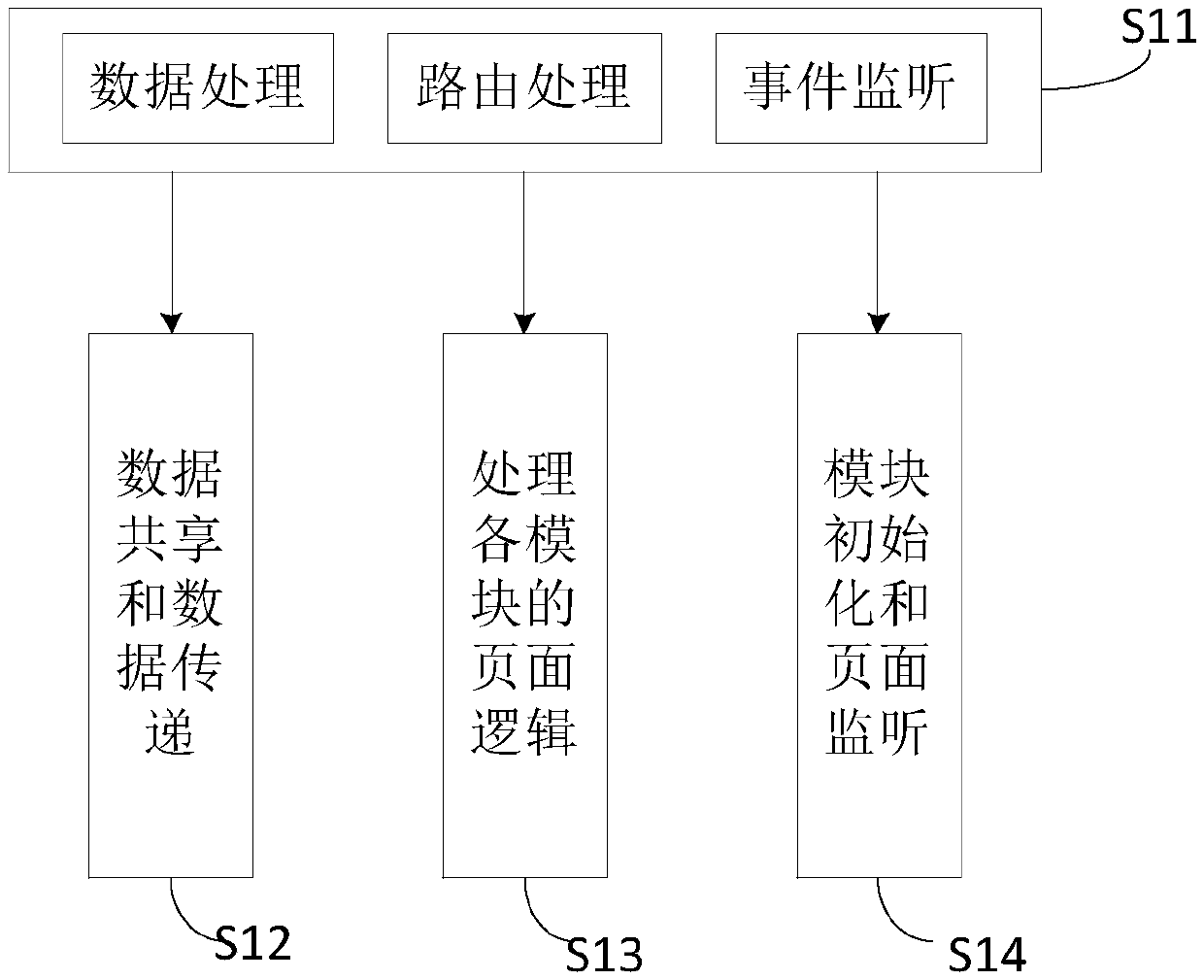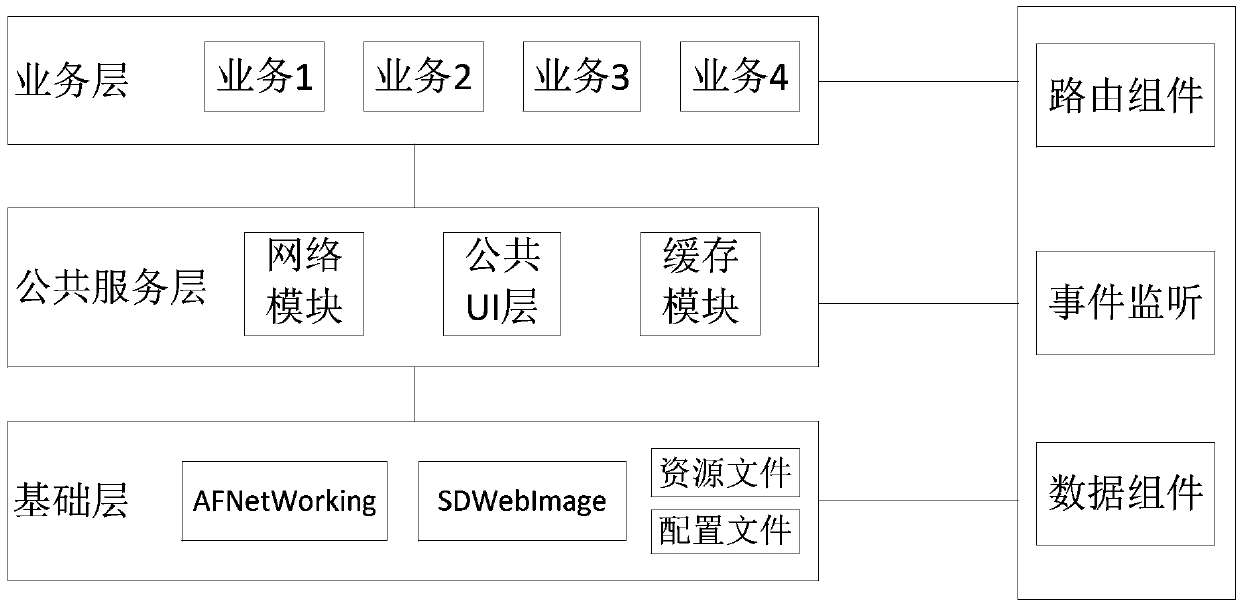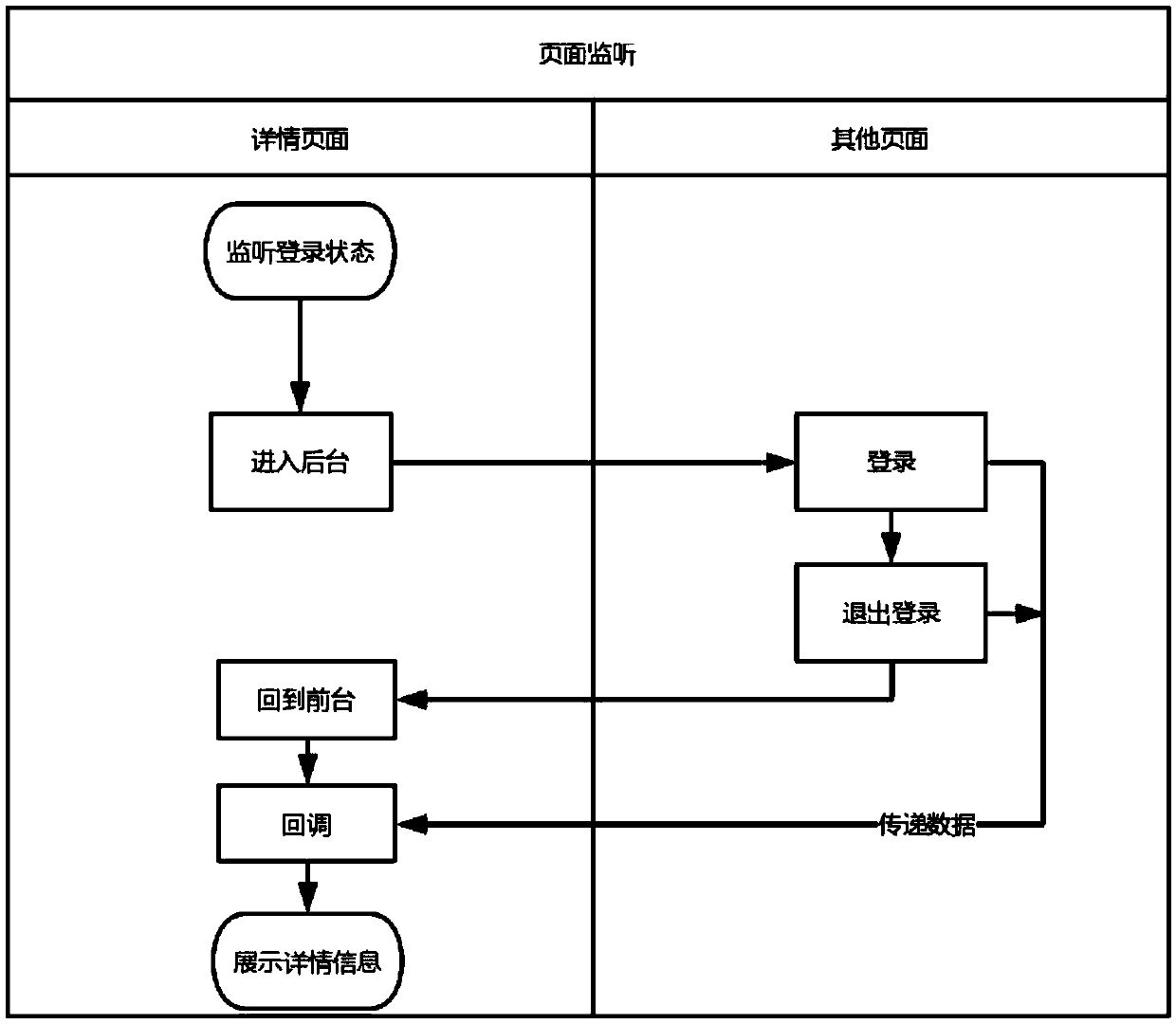APP modular development method, device and equipment based on iOS platform
An APP module and platform technology, applied in software design and other directions, can solve problems such as large memory consumption, and achieve the effect of avoiding circular references, reducing memory consumption, and reducing code interdependence
- Summary
- Abstract
- Description
- Claims
- Application Information
AI Technical Summary
Problems solved by technology
Method used
Image
Examples
Embodiment 1
[0058] Embodiment 1 of the present invention provides an APP modular development method based on the iOS platform. After splitting the APP project to be developed into multiple modules, participate in figure 1 As shown, the method includes the steps:
[0059] In step S11, the interaction between modules is divided into three parts: data processing, routing processing and event monitoring.
[0060] That is, the interactive tasks between the various modules required by the middleware are completed through three parts: data processing, routing processing and event monitoring.
[0061] Each module is each module after splitting.
[0062] Step S12, performing data processing, including performing data sharing and data transfer among modules.
[0063] Data sharing refers to the data that can be obtained by all modules, and the data transferred by the data can be attached to routes and events.
[0064] Step S13, perform routing processing, including processing the page logic of ea...
Embodiment 2
[0071] Embodiment 2 of the present invention provides a preferred embodiment of an iOS platform-based APP modular development method.
[0072] In the development of iOS platform projects, components are usually understood as smaller functional blocks, while larger-grained business functions become modules. An APP will contain many modules, and the modules will call and communicate with each other. Therefore, in order to solve the problem of interdependence between modules and rapid development and construction of projects, in this preferred embodiment, the modules are layered. For the specific architecture diagram, see figure 2 shown.
[0073] As a preferred implementation mode, it is mainly divided into a business layer, a public service layer, and a basic layer. The business layer is composed of various business modules, such as figure 2 Business 1-Business 4 shown in above refers to business modules 1-4; the public service layer is composed of network module, public UI...
Embodiment approach
[0119] This solution not only provides support for native pages on the iOS platform, but also provides support for WebView containers and React Native, so that these two types of business components can be connected to the component system through this solution like native ones. As an implementable method, the specific implementation process is as follows:
[0120] First: Through protocol extension, register protocol routes: https and reacts, so that other components can call these pages through routes. After extension, we can use routes to jump to H5 pages:
[0121] [self jumpTo:@"url / login H5 page"];
[0122] Second, make a bridge between Native and the container, use WebViewJavaScriptBridge on WebView as a JavaScript bridge, add Native Module to React Native, call routing components and data components to handle routing jumps, event notifications and data requests . Routing and notification are relatively simple, and the focus is on the processing of special types of data...
PUM
 Login to View More
Login to View More Abstract
Description
Claims
Application Information
 Login to View More
Login to View More - R&D
- Intellectual Property
- Life Sciences
- Materials
- Tech Scout
- Unparalleled Data Quality
- Higher Quality Content
- 60% Fewer Hallucinations
Browse by: Latest US Patents, China's latest patents, Technical Efficacy Thesaurus, Application Domain, Technology Topic, Popular Technical Reports.
© 2025 PatSnap. All rights reserved.Legal|Privacy policy|Modern Slavery Act Transparency Statement|Sitemap|About US| Contact US: help@patsnap.com



